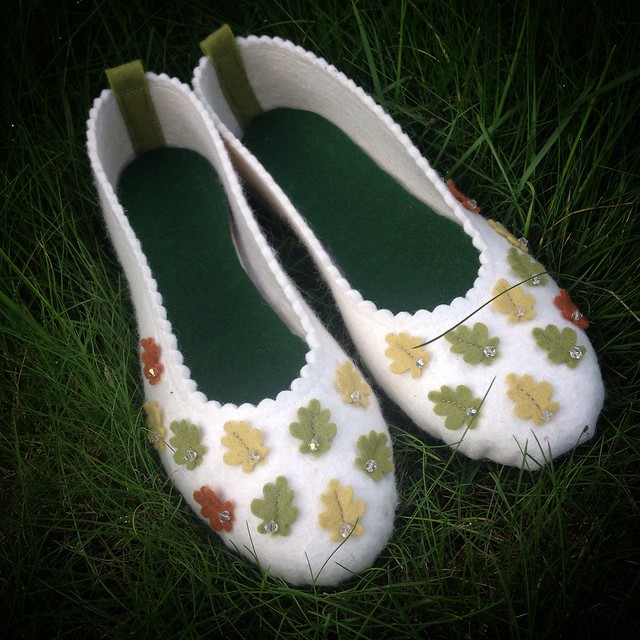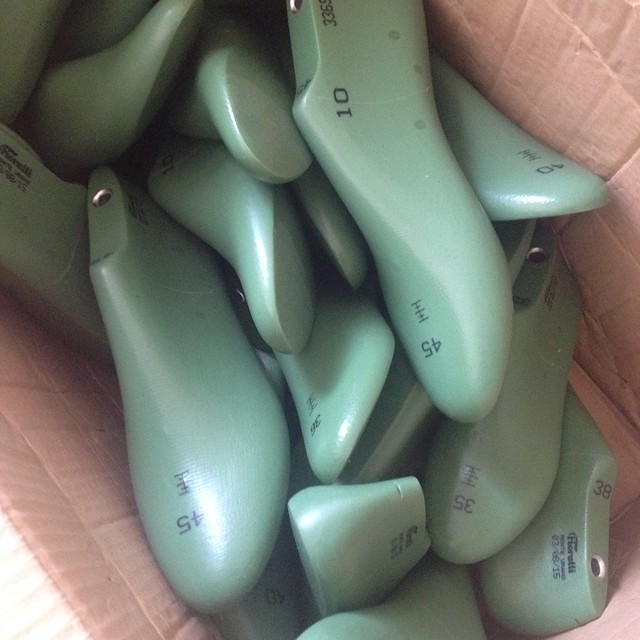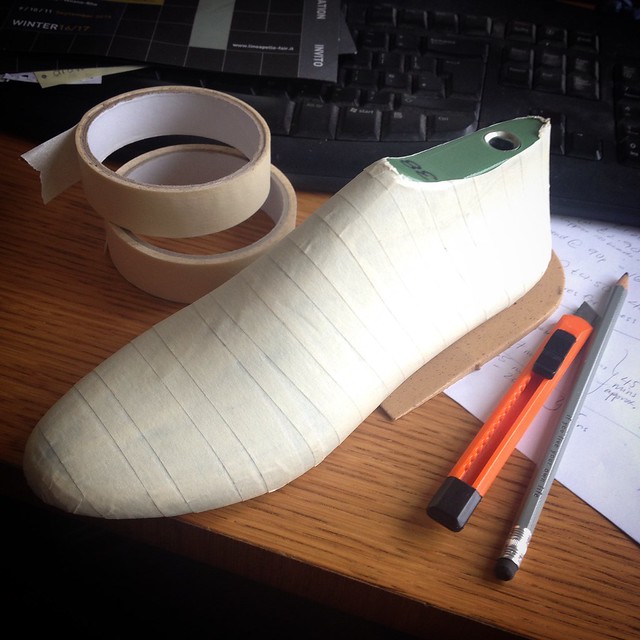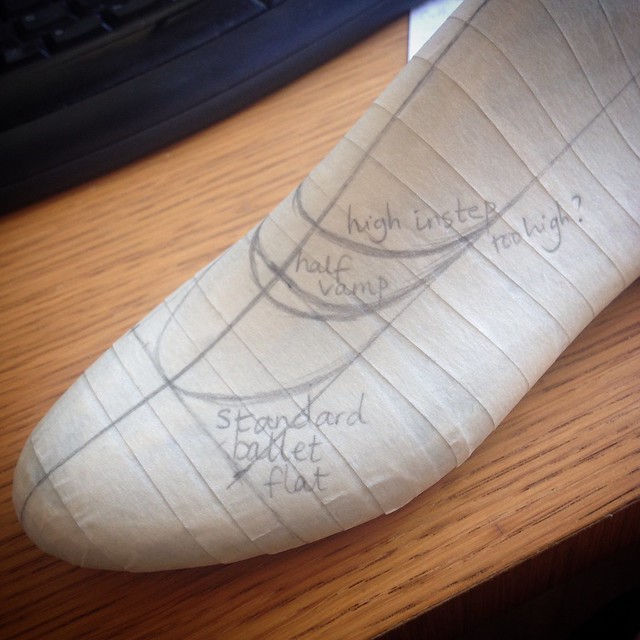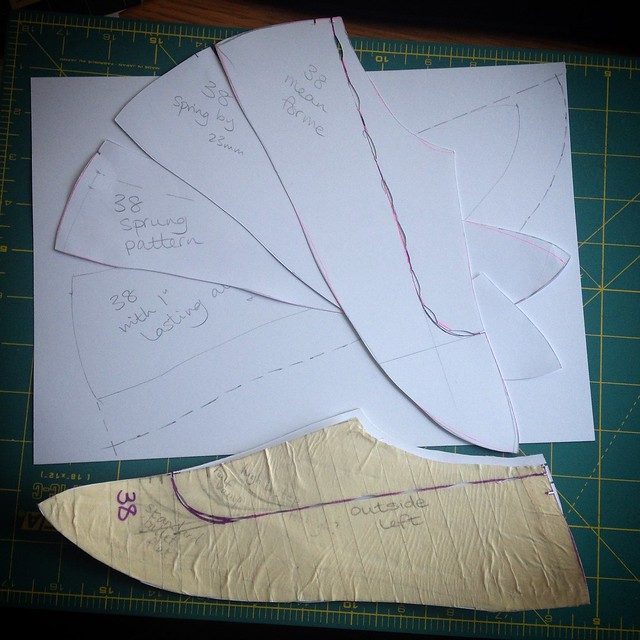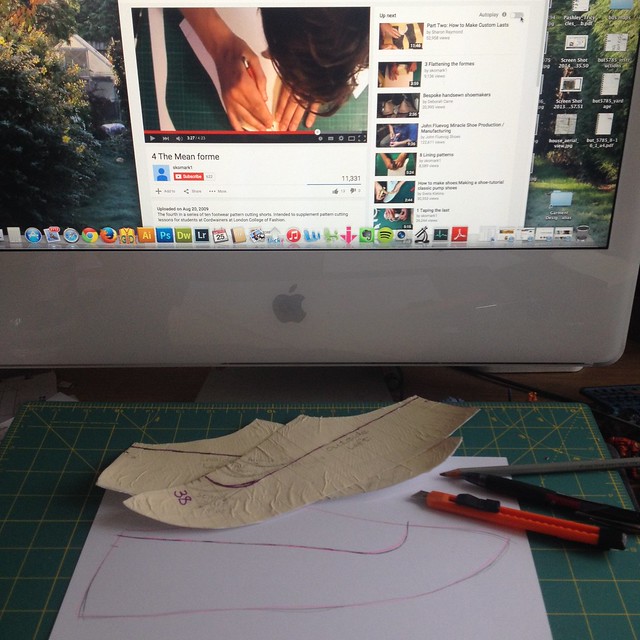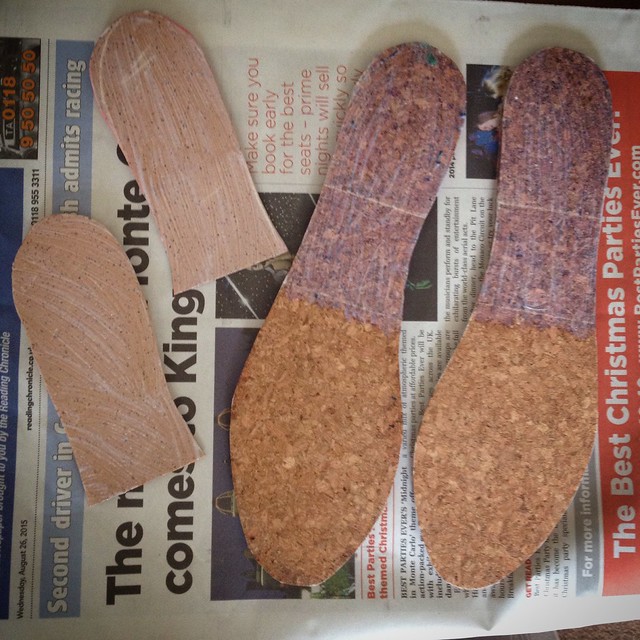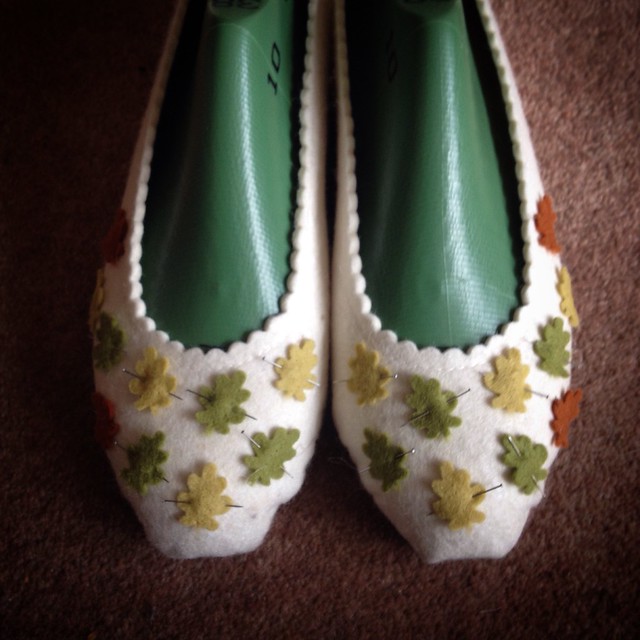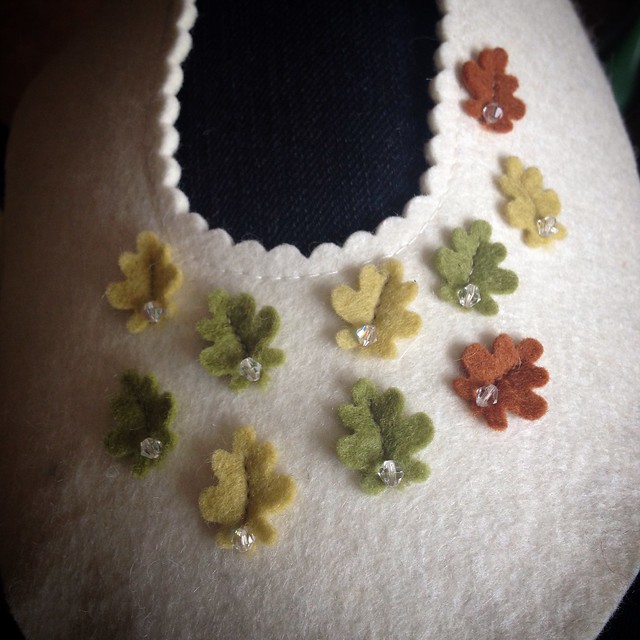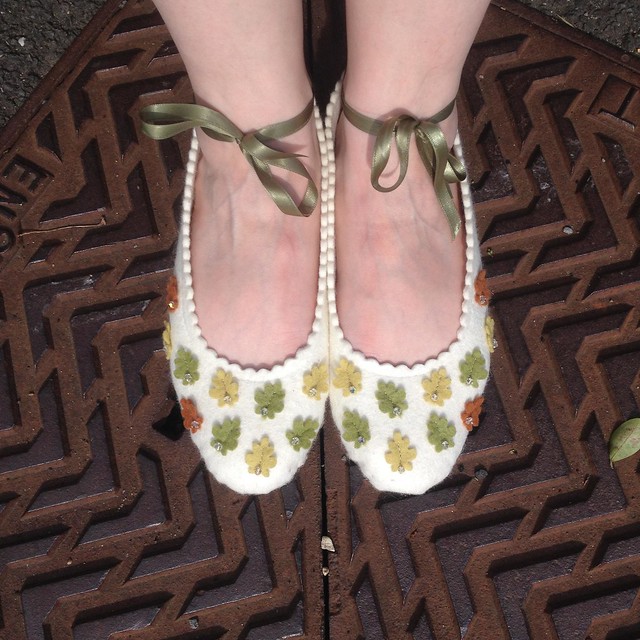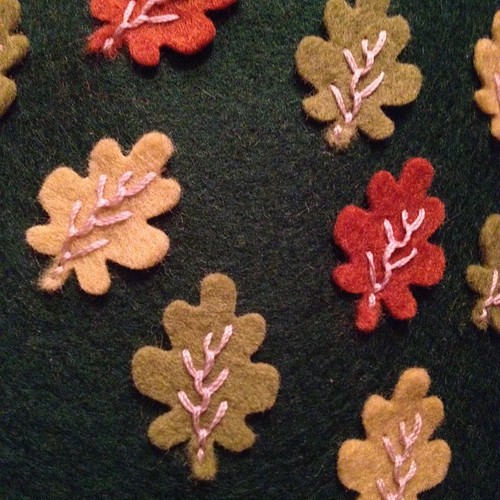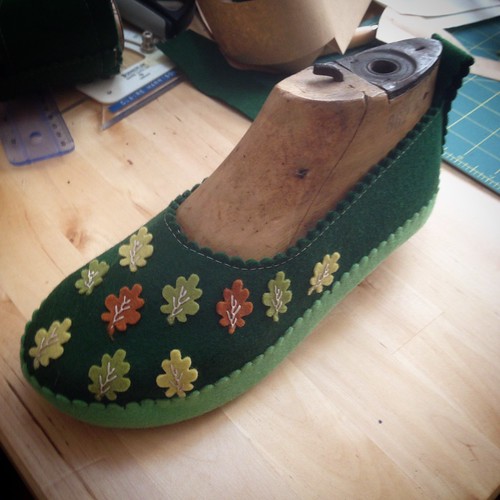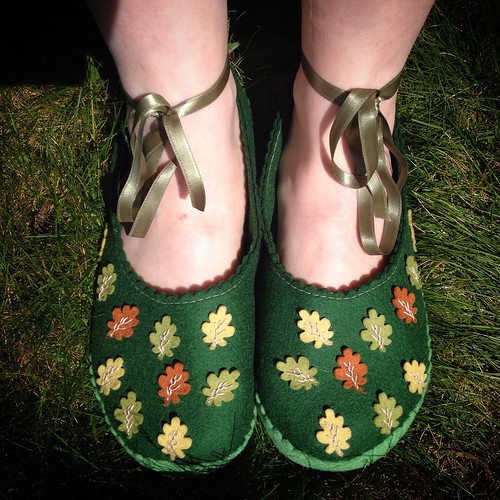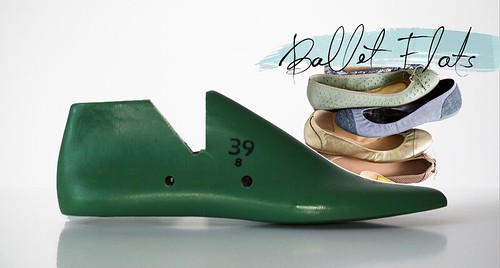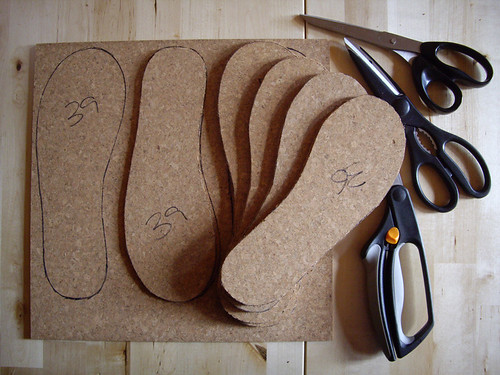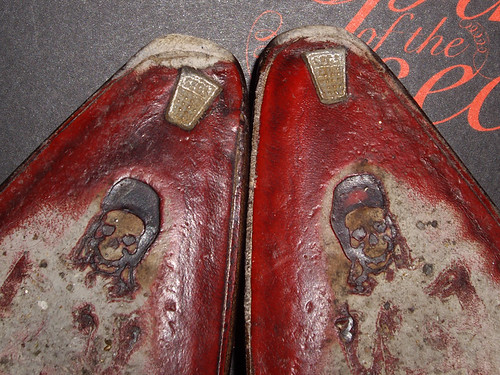Well, it feels as though it’s taken absolutely FOREVER, but I have just completed my first pair of prototype shoes made on my new lasts! After much waiting and worrying and more waiting, the lasts finally arrived at the beginning of August, and it’s taken me about three weeks to get the first pair made. Now that I know what I’m doing (and what changes I need to make), the next nine pairs should come about a lot more quickly!
I have twelve pairs of lasts in total, in European sizes from 34 to 45. They’re solid plastic (with a hinge for getting the lasts out of the shoes without stretching the uppers), and they’re really, really heavy! Thank goodness I didn’t choose the option with the metal sole plates!
Most of the work I’ve been doing so far has been distinctly un-photogenic. It starts with mummifying the lasts in two layers of masking tape.
Then comes the design, which you can now draw directly onto the last.
Repeat for every size you want to make…
And then you can peel off the tape and create the actual patterns.
This takes a bit of technical wizardry (okay, it’s just technical drawing), so I turned to some shoemaking videos produced by Cordwainers at the London College of Fashion. (They helped a bit, but I think my shoemaking books and years of research were of more use at this point.)
As uninviting as it looks, this photo represents my favourite part of the new shoes. I was able to find a good strong water-based glue, which means no more solvents and no more breathing equipment! No more shoemaking migraines! Hooray! I do still need to make sure I’ve got good ventilation, and I’ll probably wear a face mask anyway, but this stuff is so much nicer than the rubber cement I was using before. Here you can see the little wedge pieces (just 5mm deep) waiting to be glued to the cork midsoles.
While I was waiting for the glue to dry, I cut and stitched the first pair of uppers from the new patterns. I can see some pretty bridal versions in the future, although most of my prototype pairs are going to be made in fantastically bright colours!
This first pair is for me to test, and I decided to re-use the little felt oak leaves from the pair of green felt shoes that didn’t fit. (I managed to re-use the midsoles from those too, so I’m glad they weren’t too much of a waste.)
They’re stitched into place by hand, and embellished with Swarovski crystals. It’s impossible to photograph how sparkly they are, but they glitter like little raindrops on the leaves. So pretty! 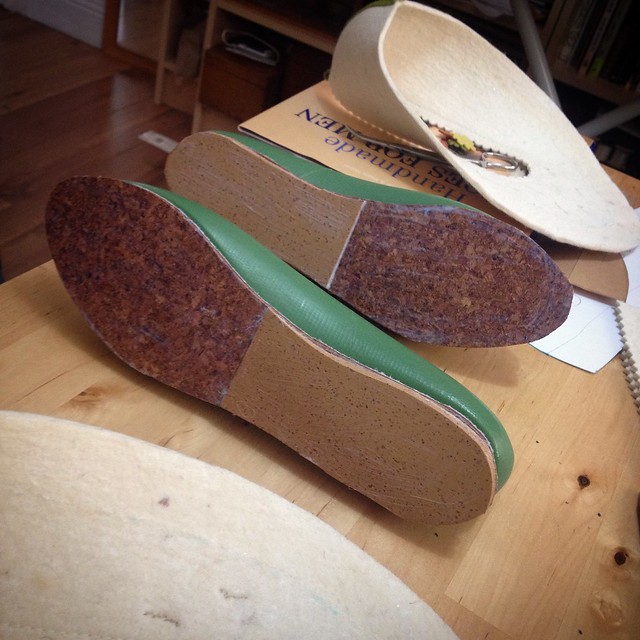
More waiting for glue… this time to attach the uppers to the midsoles. The only down side of this glue is that it takes thirty minutes to be ready to stick, as opposed to the ten minutes required by the horrible old stinky stuff. This is a very small price to pay, but it’s a bit of a trial for a very impatient person. (Who, me?)
Once the glue had dried, I took them for their first walk! I definitely need to swap the ribbons for wider ones, as these have a tendency to slip around my ankles, but otherwise they seem great so far. I’ll wear them as much as possible over the next few weeks while I continue to make the rest of the prototypes. I should end up with ten pairs to show you altogether, and then I can pop them into the Etsy shop for you!

